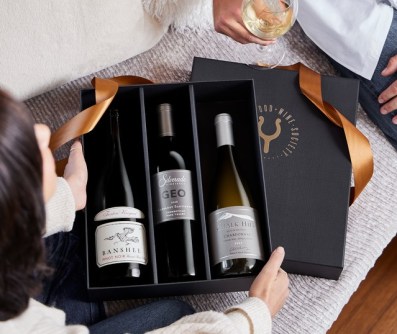The leaves are turning color in vineyards all over California. The photos pictured above are of Pinot Noir vines in Ramal East Vineyard in Carneros, which Bill Foley purchased in 2012. These grapes make their way to Chalk Hill!
The skies have been a stunning azure blue in the absence of smoke from fires, and we’re thankful for that. Foley Family Wines Director of Viticulture Kara Maraden is also thankful for the couple of days she had off once harvest was officially over for the season. But there’s still a lot of activity in the vineyards, even after the grapes have been plucked off and trucked to the various wineries.
Vines must store up nutrients and settle in for the winter months, so that come spring, they are able to awaken and push out new buds with all that stored energy. In the Q&A below, Maraden explains why vine leafs change color, how the vines store energy, and what needs to happen for the vines to have a healthy, long slumber over cooler winter months.
FFWS: Last we checked, you were still harvesting grapes from Lodi! Are you now officially done with the harvest? What was your last day?
Kara Maraden (KM): November 3 was our last day picking Cabernet Franc and Cabernet Sauvignon fruit from Firestone and November 4 was the last day picking Cabernet Sauvignon from Lodi.
FFWS: Let’s talk about leaves. Some leaves on the vines turn crazy bright colors like yellow and red. Some keep their leaves for longer than expected. When do leaves typically fall off, and what do the colors indicate, if anything?
KM: Grape vine leaves do turn colors in the fall like many other deciduous plants. Typically most varieties will turn yellow and orange and fade in color. Many times the bright red that is expressed can be virus infection but some varieties are expressing a nutrient deficiency as bright red color. There isn’t anything to worry about in this case because we expect that the vine is deficient in most everything at this point. It will be just fine next spring. What the vines really need to trigger leaf fall and put them into dormancy are several nights of really cold weather. Then they need about 150 chilling hours during the winter to give them that reset that they need. This isn’t too difficult to get in the regions that we grow. Again, the health of the vine can determine the timing of many of these stages. Some viruses can cause leaves to stay on the vine all winter long.
FFWS: Do the vines experience any kind of stress once their grapes are harvested? If so, how do you mitigate that?
KM: Actually, we decrease the stress we put the vines under during the growing season with a big drink of water and fertilizer.
FFWS: Vines have to store up energy for the next season’s crop. How do they do that?
KM: In between harvest and when the vines start to actually shut down they will be transferring any carbohydrates from the leaves and active plant parts into the roots. This is why it is important to get the water and fertilizer on while there are still leaves in the vines. These stores will stay in the roots and in the spring when the weather and soil warm up, these stored carbohydrates/sugars are what the plant uses to initiate and sustain bud break.
FFWS: Vines go dormant, right? When do they typically “go to sleep,” and when do they typically “waken?”
KM: They do go dormant. Dormancy is triggered by shortening days and cooling temperatures. It is usually official after the plants drop most of their leaves and the water stops flowing through the plant. There isn’t a set temperature or climactic condition that works for all varieties but late-November in California is typically when the onset of dormancy begins. Once the temperatures and the soils warm in the spring (and there is hopefully some rain) the vines wake up and the dormancy is broken. This usually occurs in mid to late-March.
FFWS: What is the coldest temperature a vine can survive before damage begins to occur?
KM: Many vines can withstand below freezing temperature for a certain period of time given that they are fully dormant. If there is an early freeze the water in a vine will freeze and cause it to crack which will open the door for other diseases to come in. We see most winter kill in young vines that have not gone dormant with sustained nighttime temps of below freezing. In other regions such as Oregon they cut the vine back to the ground and pile soil on it in order to protect it. There is also snow up there, so that adds a whole other level of stress. The good news is that grapevines are very hardy and it is difficult to kill them!
FFWS: What do you like most about farming in the winter months?
KM: Farming in the winter months takes on a slow and regenerative feel. You get to analyze the previous year and plan for the next. It is a hopeful time when the vines and their humans get a little rest and recharge. It also doesn’t last long as pruning will begin before we know it.




